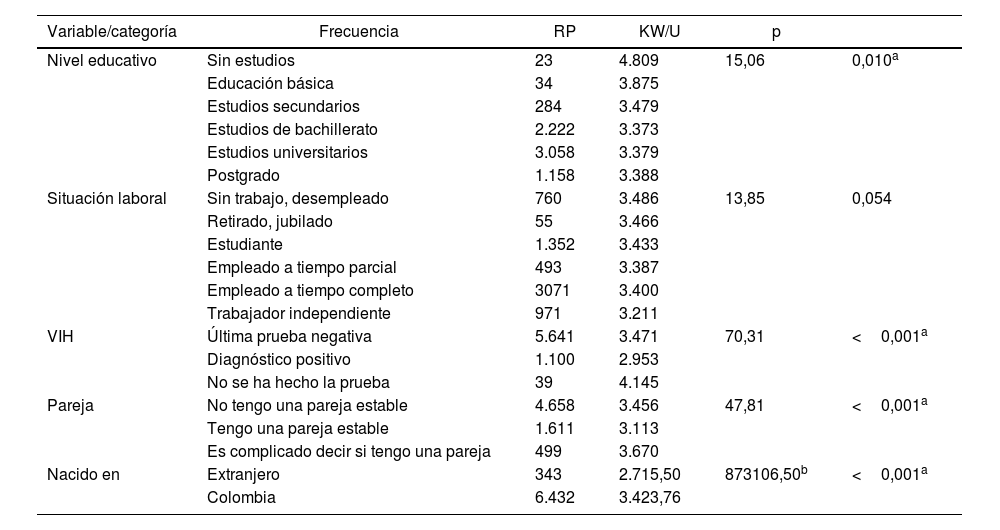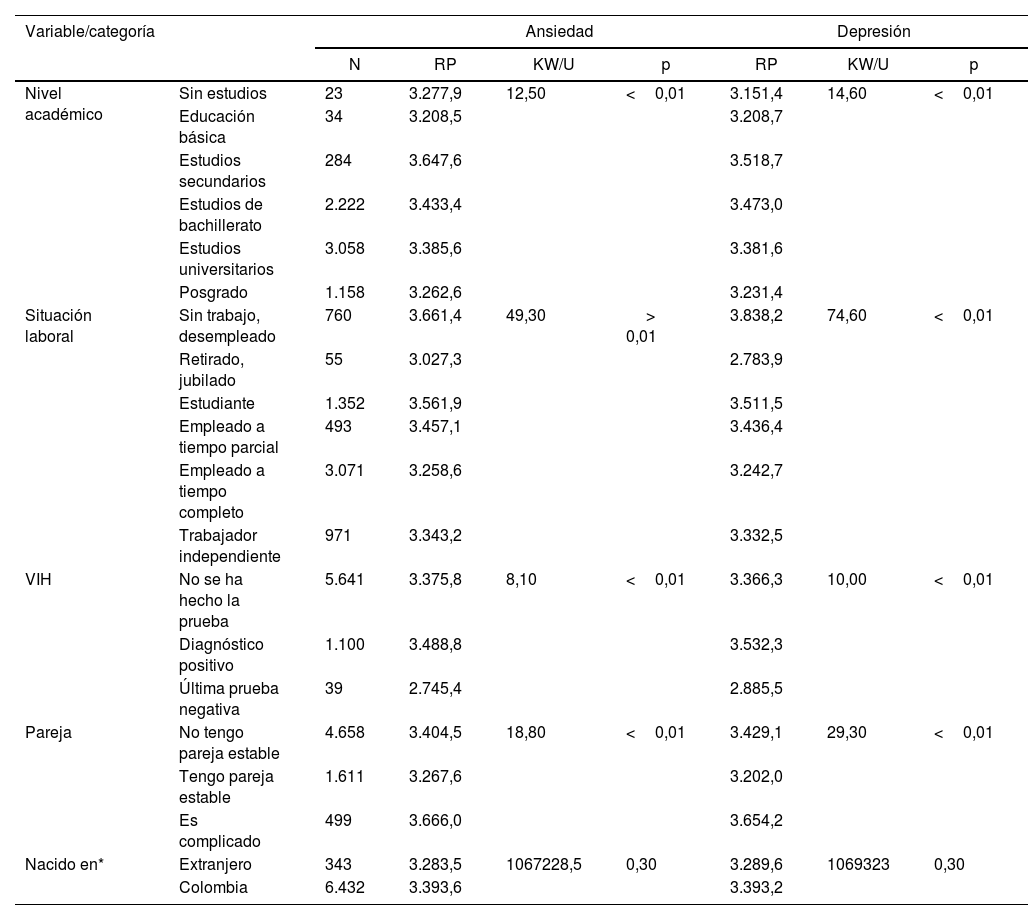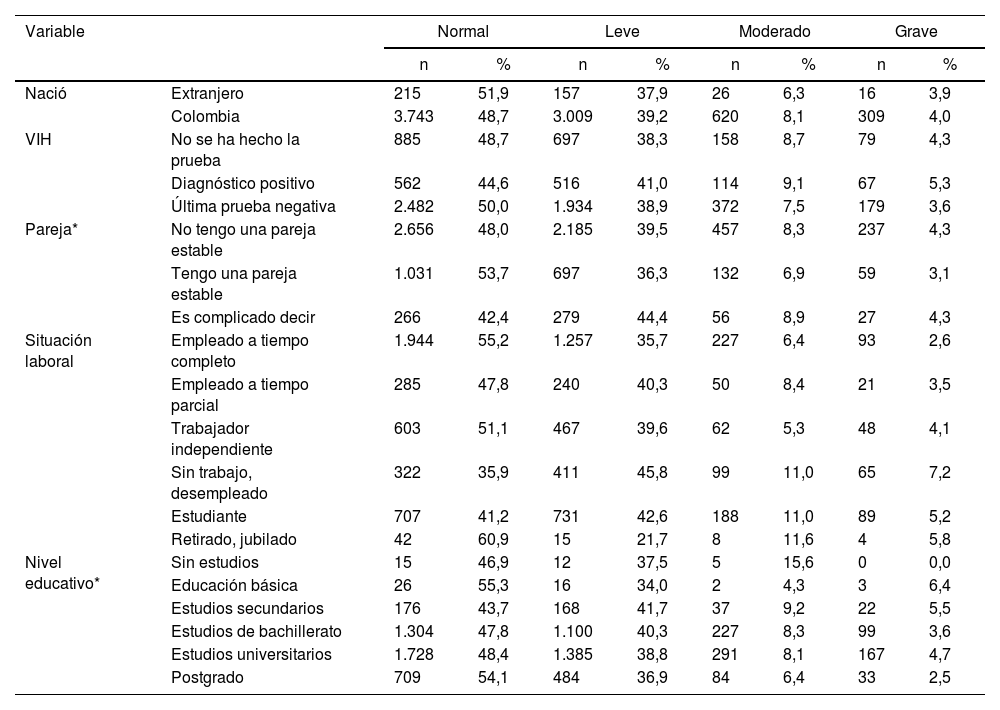La salud psicosocial es fundamental en el bienestar del ser humano. En el caso de la población de gais, bisexuales y otros hombres que tienen sexo con hombres (HSH), se ve afectada por la discriminación, la homofobia, la marginación y la exclusión social.
MétodosSe diseñó una investigación cuantitativa que empleó una encuesta virtual. Se realizaron pruebas de Kruskal-Wallis para la diferencia de medianas entre índice de Homofobia Interiorizada (HI) y diversas variables; esta misma prueba se empleó para la comorbilidad entre ansiedad y depresión.
ResultadosSe obtuvo una muestra de 8.208 individuos con edades entre los 18 y los 75 años. Entre los índices de HI y la variable nivel educativo, se observan diferencias estadísticamente significativas en las medianas de las diferentes categorías. Por otra parte, el 8,0% de la población presenta niveles moderados de comorbilidad entre ansiedad y depresión y un 4,0%, un nivel grave.
DiscusiónLa HI disminuye en la medida que los sujetos se preparan académicamente, mientras que la gravedad de la ansiedad y la depresión es mayor en quienes reportan relaciones afectivas complicadas. Las personas con diagnóstico de VIH presentan mayor gravedad de los síntomas depresivos.
ConclusionesLa HI, la depresión y la ansiedad están vinculadas con la discriminación interseccional y originan una mayor vulnerabilidad individual y social de los gais, bisexuales y otros HSH que afecta directamente a su salud psicosocial.
Psychosocial health is fundamental to the well-being of the human being. In the case of the gay, bisexual and other men who have sex with men (MSM) population, it is affected by discrimination, homophobia, marginalisation and social exclusion.
MethodsA quantitative investigation was designed, which used a virtual survey. Kruskal Wallis tests were performed for the difference in medians between the internalised Index of Homphobia (IH) and various variables; this same test was used for the comorbidity between anxiety and depression.
ResultsA sample of 8,208 individuals was obtained, with ages between 18 and 75 years. Between the IH indices and the educational level variable, statistically significant differences are observed in the medians of the different categories. On the other hand, 8.0% of the population presents with moderate levels of comorbidity between anxiety and depression and 4.0%, a severe level.
DiscussionIH decreases as the subjects prepare academically, while the severity of anxiety and depression is greater in those who report complicated affective relationships. People with a diagnosis of HIV present with a greater severity of depressive symptoms.
ConclusionsIH, depression, and anxiety are linked to intersectional discrimination, leading to greater individual and social vulnerability for people who are gay, people who are bisexual, and other men who have sex with men that directly affects their psychosocial health.











